
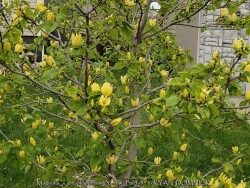
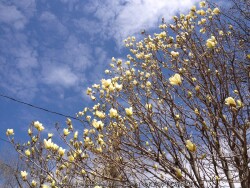
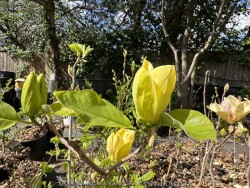
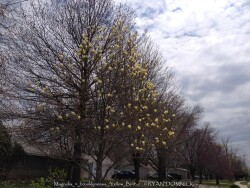
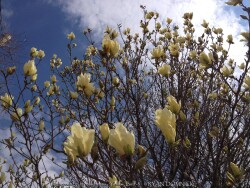
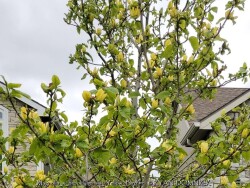
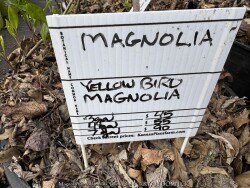
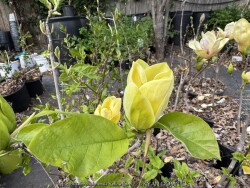
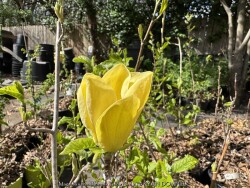
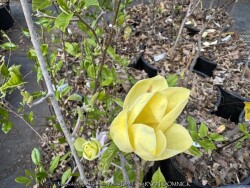
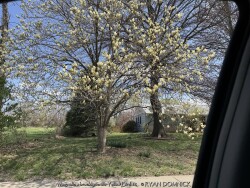
Plant Min Zone: 5a
Plant Max Zone: 9a
Sunlight: Full Sun, Part Sun, Shade
Water / Rainfall: Average, High
Soil Quality: Rich
Bloom Season: Spring
Flower Color: Yellow
Berry / Fruit Color: Brown-Beige, Red
Spring Foliage Color: Light Green
Summer Foliage Color: Light Green
Fall Foliage Color: Yellow, Brown-Beige
Evergreen Foliage: No
Winter Interest: No
Scented Flowers: Yes
Drought Tolerance: Low
Wet-Feet Tolerance: Medium
Humidity Tolerance: Medium, High
Wind Tolerance: Low
Poor Soil Tolerance: Acidic Soil (low PH)
Height: 15' - 25'
Width: 10' - 20'
Growth Rate: Slow
Service Life: Tree: Service life varies
Maintenance Need: Low
Spreading Potential: N.A.
Yearly Trimming Tips: Tree: No Trimming Needed / Trim as Needed When Mature / Lower Branches.
Plant Grouping Size: Specimen Planting of 1-3
Best Side of House: Large Tree; Best in Open Areas
Extreme Planting Locations: None
Ornamental Features: Multiple Seasons of Interest, Rot Resistant / Strong Wood Tree, Long Blooming Season, Large Tropical Foliage / Flowers
Special Landscape Uses: Clean Street Tree
Possible Pest Problems: Occasional Problems
Plant Limitations: Susceptible to Iron Chlorosis, Needs Thick Winter Mulch, Needs Regular Irrigation, Susceptible to Late Spring Frosts
Shippable in 2026: YES
Yellow Flowering Magnolia (Magnolia x brooklynensis 'Yellow Bird') is a rare jewel in the landscape: a tree with giant canary yellow flowers! Yellow Bird is an upright, conical to pyramidal, large deciduous tree that can grow 40 feet tall in Kansas. This magnolia would be a fine residential specimen in sheltered locations with moist, rich soil with plenty of space to spread. Magnolias in general are a family of plants that have been around for millions of years and are among the most primitive of all flowers. In fact, most magnolia flowers evolved before bees and are thus pollinated by beetles. Magnolias generally grow in moist, well drained soils in sun or shade. They have no serious pests or disease problems.